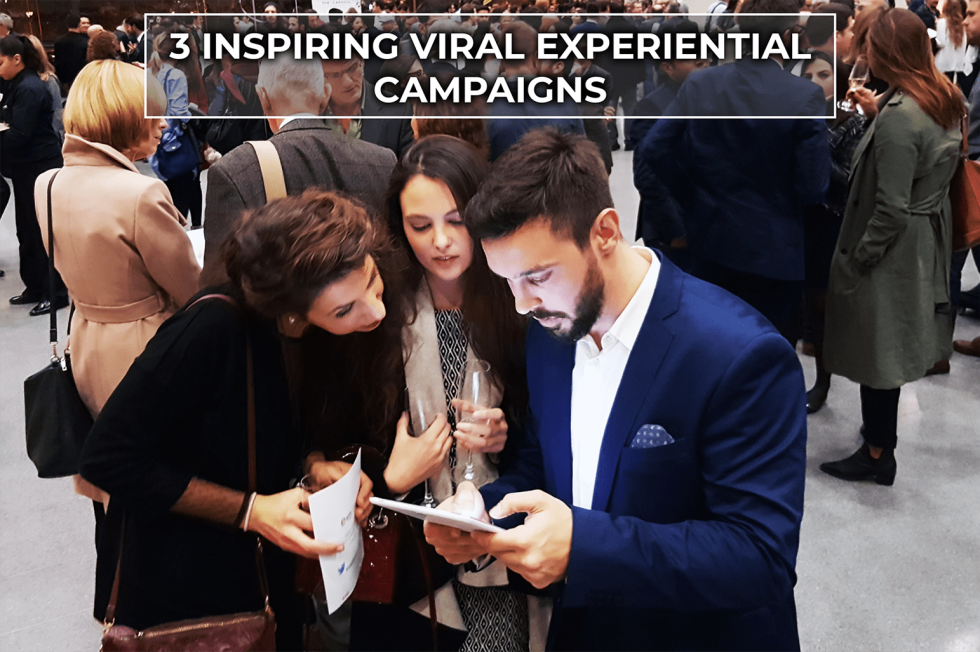Gone are the days of capturing the hearts and attention of consumers through traditional advertising. We live in a world where customers can actively switch off or opt-out of seeing ads altogether. Thus, here’s where experiential marketing campaigns fill all the marketing gaps and promotes a brand in more creative ways to share their brand story, build credibility, and spark a lasting connection between a brand and its consumers. Basically, the idea is to create a tangible experience that will create a more valuable and memorable impact on the consumer bringing remarkable brand awareness.
A viral marketing campaign is able to tap into the emotions of the users, especially positive ones like joy and awe. There are, however, only a few brands, who have understood what makes the audience tick.
- Porsche – “Virtually Porsche”
Porsche Cars built a Porsche Experience Center (PEC) to provide an immersive experiential brand experience for the attendees. In an attempt to pull the potential Porsche drivers, virtual reality platform was used to build a unique and different experience that allowed anyone and everyone to experience the feeling of sitting in a sports car while driving through the PEC.
Each individual viewer was wrapped in faux-leather to resemble the beautiful leather of the car’s interior and featured a scannable code that easily directed people to the app. When viewers placed their smartphones to the Cardboard viewer, they instantly had a VR headset, an experience, unlike anything the brand had done in the past. To ensure everyone could view the app in the right way, 5000 limited edition Porsche-branded Google Cardboards were produced.
The Porsche VR App’s first month alone facilitated 2.2x more virtual test drives than actual test drives in the United State. The Porsche VR lead to more than double potential driver experiencing the sights, sounds and feel of a Porsche sports car than the entire traditional test drive infrastructure. Instead of mimicking the one-of-a-kind Porsche driving experience through words or traditional 2D video, this experience allowed consumers to truly immerse in Porsche through virtual reality. This provided experience to everyone from long-time Porsche loyalists to automotive and technology enthusiasts —all without actually gripping the wheel. Have a look: http://bit.ly/2GXvXFx
Take away:
Virtual Reality is one of the most exciting features in every industry, from gaming to education to retail. VR concepts are in trend and will work wonders in influencing the audience. Simply put, VR/AR can change the way we discuss, attend and interact at events. To know more: http://bit.ly/2KElnEe
- Facebook IQ Live
Facebook has always understood how much data it has on how people use their platforms. For that reason,
it created the Facebook IQ Live experience. For this experience, this data was
used to curate live scenes that depicted the data. Among them was the IQ Mart:
A “retail” setting that represented the online shopper’s conversion
path when using social media for buying decisions. There was also a classic
Instagram cafe, chock full of millennial-esque photo opportunities and people
snapping them – latte art and all. The campaign wasn’t just memorable. It also
proved to be really helpful for the attendees as the experience provided them
with valuable insights on how to use Facebook for business.
By creating this experience, Facebook was able to accomplish its goal. It also created a positive brand perception for a few audiences – including, for example, the people who might have been unsure of how to use the platform for business.
Take aways:
Build experience for people who aren’t sure about how they would use your product or service. Find ways for them to interact with your brand in a way that creatively gives out how it can benefit them. Create a live instalment that illustrates the audience and helps people understand exactly what you mean.
- Docker Dash
Docker is a software platform that allows developers to make and run apps on different operating systems – a technology known as “containerization.” Docker used its developer conference, DockerCon 2017, to nurture its core enterprise market with a distinctive product demo called Docker Dash. What made it so unique? It wasn’t a demo – in fact, it was a game. And conference guests weren’t guests, they were players.
Docker Dash was a live video game-style simulation of Docker’s application platform, and it recruited 5,000 of its enterprise attendees to create an app together by solving a series of fun challenges inside the game. Each challenge allowed the “players” to engage a feature of Docker’s product and ultimately complete their app. It was a fun, collaborative way to show the new product of Docker. Docker Dash got the attention of more than 3.6 million people – those who watched and posted about the event from social media, in addition to those who attended Docker Conference in person.
Watch here: http://bit.ly/2YSUkOQ
Takeaways:
“Gamify” your brand. Give people the ability to play and compete for something, and you’ll instil in them a sense of accomplishment. By creating opportunities for your attendees to collaborate and play together, you allow them to share their ideas making for more educated customers as a result.
Surely, taking some very calculated risks worked out pretty well for these brands. So when deciding to create an experience with your brand, don’t be afraid to think outside of the box. Mindfully think about numerous experiential ways people can engage and interact with your brand.
